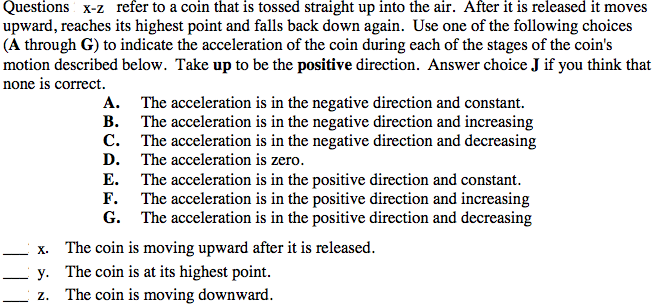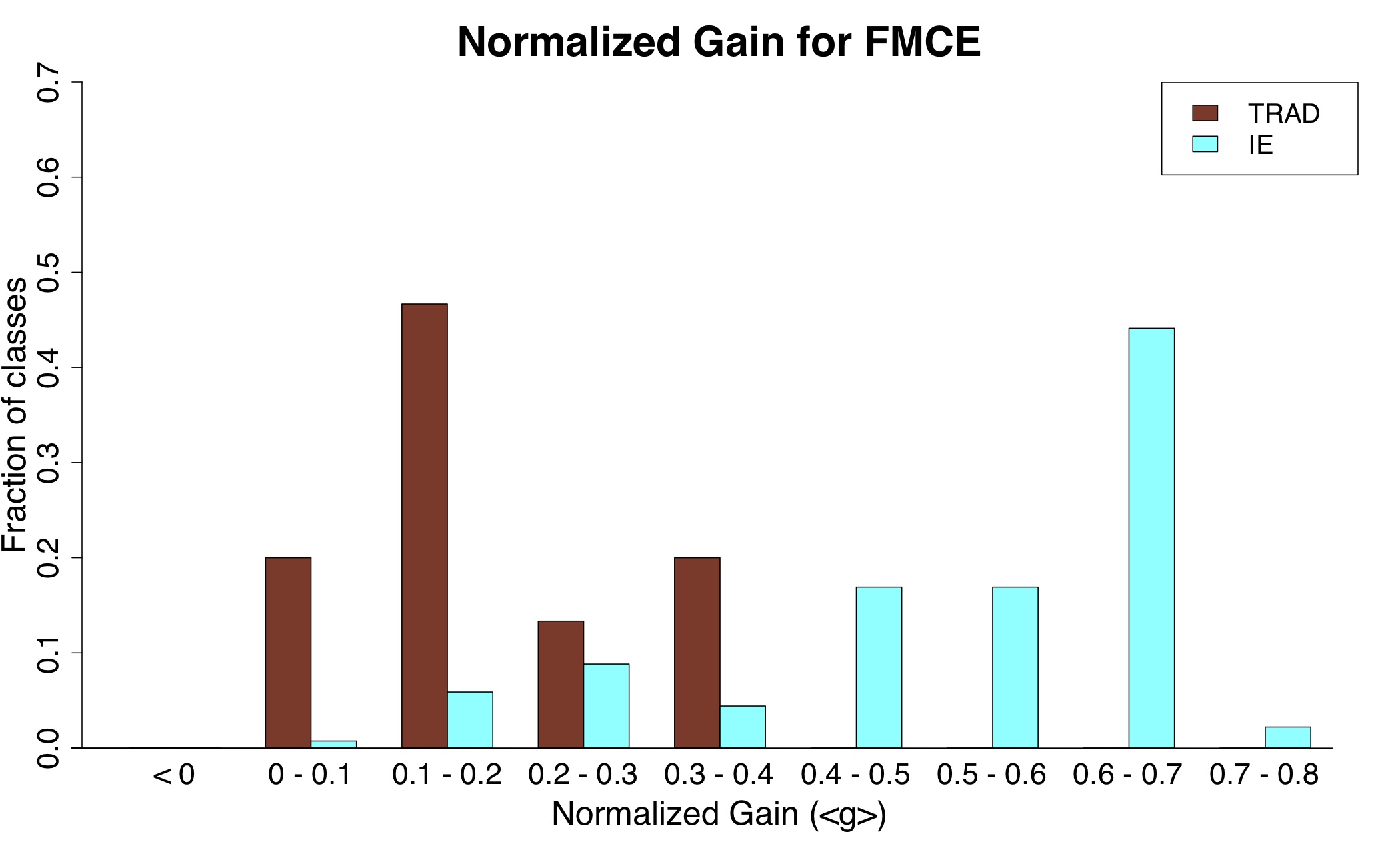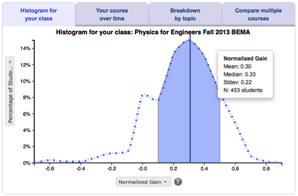Developed by Ron Thornton and David Sokoloff
| Purpose | To assess students’ understanding of Newtonian mechanics. |
|---|---|
| Format | Pre/post, Multiple-choice |
| Duration | 35 min |
| Focus | Mechanics Content knowledge (kinematics, forces, graphing, energy) |
| Level | Intro college, High school |
Sample questions from the FMCE:

more details
This is the highest level of research validation, corresponding to all seven of the validation categories below.
Research Validation Summary
Based on Research Into:
- Student thinking
Studied Using:
- Student interviews
- Expert review
- Appropriate statistical analysis
Research Conducted:
- At multiple institutions
- By multiple research groups
- Peer-reviewed publication
The multiple-choice questions on the FMCE were developed based on student interviews, responses to open-ended versions of the questions and expert review. Statistical analyses of reliability and consistency were conducted and the FMCE was found to be reliable and consistent between test and re-test. A factor analysis found that questions were clustered around three factors, which were named “Newton’s first and second law, including acceleration,” “Newton’s third law,” and “velocity concept”. This means that students’ view these groups of questions as strongly related. The FMCE has been used to compare the effectiveness of many different teaching methods and the results published in over 20 peer-reviewed publications. It has been administered at over 15 different institutions to over 20,000 students in both algebra and calculus-based introductory physics courses.
We don't have any translations of this assessment yet.
If you know of a translation that we don't have yet, or if you would like to translate this assessment, please contact us!
Score the FMCEv98 on the PhysPort Data Explorer
With one click, you get a comprehensive analysis of your results. You can:
- Examine your most recent results
- Chart your progress over time
- Breakdown any assessment by question or cluster
- Compare between courses
| Typical Results |
|---|
This figure from Von Korff et al. 2016 presents typical FMCE normalized gain scores for two different teaching method types, interactive engagement and traditional lecture, for US and Canadian college students at a wide variety of institution and class types. Courses taught using interactive engagement methods have higher normalized gains than those taught using traditional lecture. These results are from a metaanalysis of FMCE gains for 14,000 students in 150 classes, published in 15 papers. The FMCE has also been given to tens of thousands of students in high school and outside of the US, who are not included in this study. The average normalized gain is 0.52 for interactive engagement and 0.19 for traditional lecture.
|
The latest version of the FMCE, released in 1999, is called v99 and has 47 questions. The original version, v98, published in Thornton and Sokoloff (1998), is the same as the 1999 version except that it is missing the last 4 questions, which are about energy. Most scoring schemes do not score the last 4 questions.
Variation
|
|
Force and Motion Conceptual EvaluationContent knowledge Mechanics (kinematics, forces, energy, graphing)Intro college, High school Pre/post, Multiple-choice |






